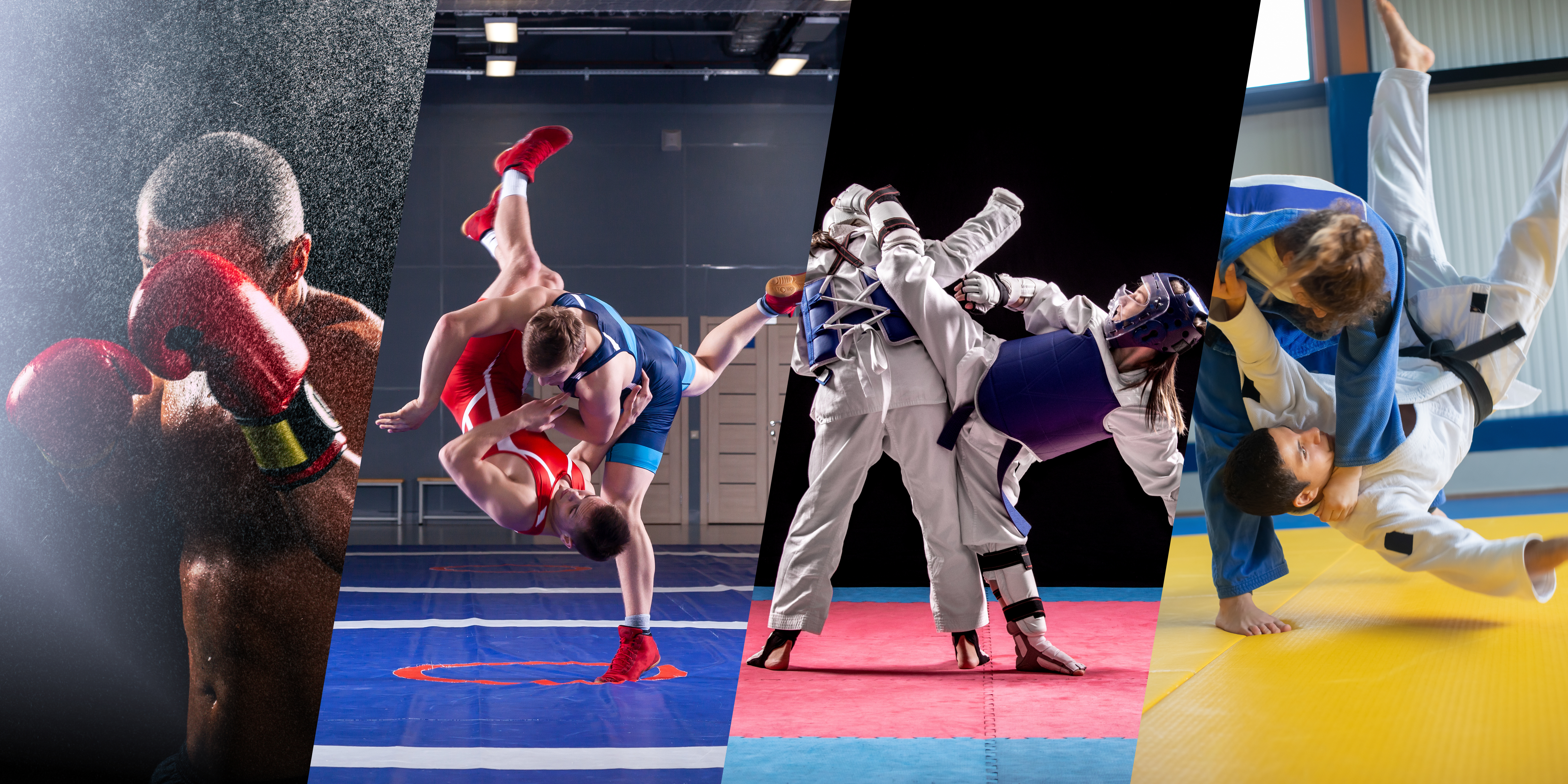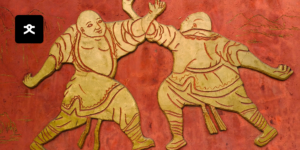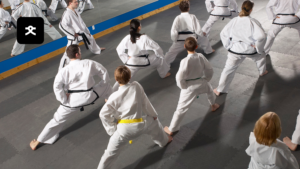Martial arts have long been a significant part of the Olympic Games, representing not only the physical prowess and discipline of athletes but also their deep cultural heritage. Among the martial arts disciplines featured in the Olympics, Judo, Taekwondo, and Karate stand out as the primary contenders, each with its own unique history, techniques, and competition rules.
In this blog, we’ll dive into the origins, key techniques, and Olympic highlights of these three martial arts, and explore how the Martial Profile app can help athletes excel in these demanding sports.
Judo: The Gentle Way
Origins
Judo, which means “the gentle way,” was founded in Japan by Jigoro Kano in 1882. Kano, who was an expert in various forms of jiu-jitsu, sought to create a martial art that focused on using an opponent’s strength against them rather than relying on brute force. Judo emphasizes throws, holds, and submissions, making it distinct from other martial arts that prioritize striking.
Key Techniques
Judo techniques are broadly divided into three categories: Nage-waza (throwing techniques), Katame-waza (grappling techniques), and Atemi-waza (striking techniques, although these are rarely used in competitive Judo). The most famous techniques include the Seoi-nage (shoulder throw), Uchi-mata (inner thigh throw), and Osoto-gari (major outer reap). These techniques require a deep understanding of balance, timing, and leverage.
Competition Rules
Judo matches take place on a mat called a tatami, with competitors attempting to throw their opponent onto their back or pin them for a specified amount of time. Matches can also be won by forcing an opponent to submit using joint locks or chokeholds. Points are awarded based on the quality of throws or pins, and a match can be won outright with an “ippon,” which is equivalent to a knockout in other sports.
Notable Olympic Moments
Judo made its Olympic debut in Tokyo in 1964 and has since become a staple of the Games. One of the most memorable Olympic moments in Judo was when Tadahiro Nomura of Japan became the first and only judoka to win three consecutive Olympic gold medals (1996, 2000, 2004). His achievement solidified Japan’s dominance in the sport and inspired countless practitioners worldwide.
Taekwondo: The Art of Kicking
Origins
Taekwondo, which translates to “the way of the foot and the fist,” originated in Korea and has roots that date back over 2,000 years. However, the modern form of Taekwondo was developed after World War II, combining elements of traditional Korean martial arts with influences from other fighting styles. It emphasizes high, fast kicks and dynamic footwork.
Key Techniques
The core of Taekwondo lies in its kicks, which are categorized by their height, angle, and the part of the foot used. Some of the most popular kicks include the Roundhouse Kick (Dollyo Chagi), Axe Kick (Naeryo Chagi), and Spinning Back Kick (Dwi Chagi). In addition to kicks, Taekwondo also includes hand strikes, blocks, and open-handed techniques, though these are less emphasized in competition.
Competition Rules
Olympic Taekwondo is fought on a mat, with points awarded for successful kicks and punches to the opponent’s torso or head. The primary scoring techniques involve kicks to the head, which can earn up to four points depending on the complexity of the kick. Matches consist of three rounds, and the athlete with the most points at the end of the match wins. Taekwondo matches are known for their fast pace and the frequent use of spinning and jumping kicks.
Notable Olympic Moments
Taekwondo became an official Olympic sport in the 2000 Sydney Games. Since then, it has produced many thrilling moments, such as Hadi Saei of Iran winning gold in both the 2004 and 2008 Olympics, solidifying his reputation as one of the greatest Taekwondo athletes of all time. Another unforgettable moment was when Jade Jones of Great Britain became the first woman to win back-to-back Olympic gold medals in Taekwondo (2012, 2016).
Wrestling: The Ancient Sport
Origins
Wrestling is one of the oldest sports in Olympic history, dating back to the ancient Games in 708 BC. It has two primary styles in the Olympics: Greco-Roman and Freestyle. Greco-Roman wrestling focuses on upper-body techniques, while Freestyle allows the use of legs for takedowns and holds.
Key Techniques
Wrestling techniques revolve around takedowns, pins, and throws. Double-leg takedowns and suplexes are common in Freestyle, while body locks and arm throws are prevalent in Greco-Roman.
Competition Rules
Wrestling matches are contested on a circular mat, with athletes aiming to pin their opponent’s shoulders to the mat or score points through takedowns and holds. Matches are divided into two periods, and the wrestler with the most points or a pin victory wins.
Notable Olympic Moments
Wrestling has seen numerous iconic Olympic moments, such as Aleksandr Karelin’s dominance in Greco-Roman wrestling, where he went undefeated for 13 years, winning three Olympic gold medals from 1988 to 1996.
Boxing: The Sweet Science
Origins
Boxing has been a part of the Olympics since 1904. It is a sport of striking, where athletes use punches to score points or knock out their opponents. Boxing requires not only physical strength but also strategic thinking, often referred to as “the sweet science.”
Key Techniques
Boxing techniques include jabs, hooks, and uppercuts. Footwork and defensive maneuvers like slips and weaves are also crucial to a boxer’s success. Conditioning and mental toughness are essential components of a boxer’s training regimen.
Competition Rules
Olympic boxing matches consist of three rounds, with points awarded for clean, effective punches. Boxers wear headgear (though this has been removed for men since 2016) and compete in weight classes to ensure fair competition.
Notable Olympic Moments
Boxing has produced some of the most legendary Olympic moments, such as Muhammad Ali (then Cassius Clay) winning gold in 1960, and Cuba’s Teofilo Stevenson becoming a three-time Olympic gold medalist in heavyweight boxing (1972, 1976, 1980).
Martial Profile: Your Ultimate Training Companion
As you explore the world of Olympic martial arts, you might be inspired to take your own training to the next level. Whether you’re a seasoned martial artist or just starting out, tracking your progress and staying motivated is key to improvement. That’s where Martial Profile comes in.
Martial Profile is a comprehensive app designed to help martial artists of all levels monitor their training, set goals, and connect with a community of like-minded individuals. With features that allow you to log your workouts, track your progress in various martial arts disciplines, and even participate in simulated training sessions, the app provides invaluable tools for athletes aiming to improve their skills.
One of the standout features of Martial Profile is its ability to track your performance across multiple martial arts styles. Whether you’re practicing Judo, Taekwondo, Karate, or another discipline, you can easily record your sessions, analyze your progress, and identify areas for improvement. The app’s workout generator also offers personalized training sessions, tailored to your specific goals and the martial art you’re focused on. This helps you make the most of your time on the mat, ensuring that every session counts.
For those who compete in martial arts, Martial Profile offers a live streak leaderboard, where you can see how your training compares to others in the community. This feature not only adds a layer of motivation but also encourages consistency, which is crucial for success in any sport.
In addition to tracking physical progress, Martial Profile also allows you to engage with the mental and strategic aspects of martial arts. You can take notes on your training, reflect on your experiences, and even share your achievements with the community. This holistic approach to training ensures that you’re developing not just as a fighter, but as a well-rounded martial artist.







Leave a Reply